 |
Convert WAVE64 to AMR
|
Total Audio MP3 Converter converts WAVE64 files to AMR format.
The software is an all in one audio converter that supports more than 90 audio
and video files as input, and converts to popular formats such as MP3, WAV, AAC,
M4A, OGG, WMA, and AMR.
Total Audio MP3 Converter also supports batch conversion, and is full compatible
with Vista and Windows
7.
- Free Download
Total Audio MP3 Converter here and then install the software
by instructions
- Launch Total Audio MP3 Converter
- Choose WAVE64 Files
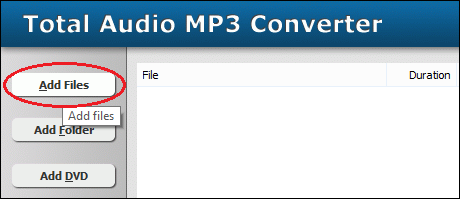
Click "Add Files" to choose WAVE64 files and then add them to conversion
list.
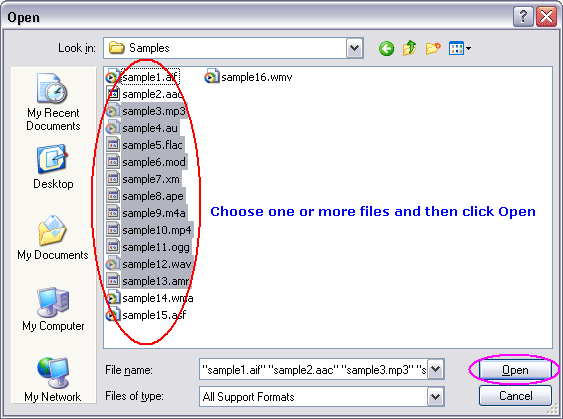
Choose one or more WAVE64 files you want to convert and then click Open.
- Choose "to AMR"
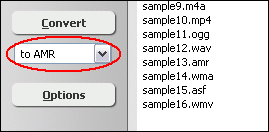
- Convert WAVE64 to AMR
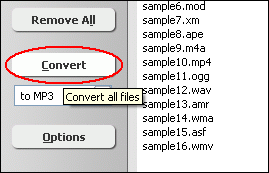
Click button "Convert" to convert all WAVE64 files to AMR format.
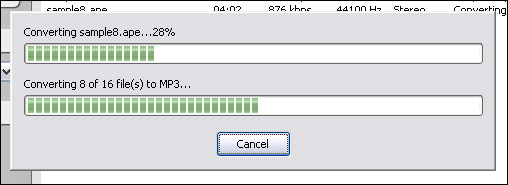
The software is converting WAVE64 files to AMR format.
- Play & Browse
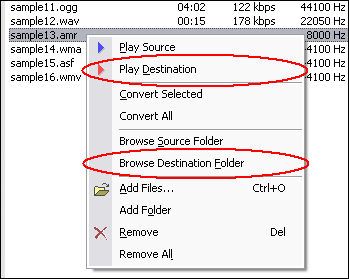
When conversion completes, you could right-click converted item and choose "Play
Destination" to play the destination file; or choose "Browse Destination
Folder" to open Windows Explorer to browse the destination file.
Top
What is WAVE64?
The RIFF/WAVE file format as defined by Microsoft allows to store up to 4 GB of
audio data in a single file. This is sufficient to hold about 6h 45min of uncompressed
PCM coded stereo 16-bit audio signals with a sample rate of 44.1 kHz. However,
for multi channel audio (e.g. 5.1 surround), high-definition formats (24 bits,
96 or 192 kHz sample rate) or some special applications in production and broadcasting,
the file size limit of 4 GB is rather inconvenient, since long recordings need
to be split into several files. The file size limit of 4 GB exists, because all
size fields in the RIFF/WAVE format have a size of 32 bits, resulting in a maximum
size of 2^32 = 4294967296 bytes.
The Sony Wave64 file format is defined as a true 64 bit file format that allows
to overcome the limitations of the RIFF/WAVE format. The file format was originally
defined by Sonic Foundry. In Summer 2003, Sony Pictures Digital acquired Sonic
Foundry's Desktop Software assets. Since then, the new format is officially promoted
as Sony Pictures Digital Wave 64. Companies are encouraged to support this format
and no royalties have to be paid to use it.
The Sony Wave64 file format is very similar to the well known RIFF/WAVE format.
Therefore, existing software implementations of RIFF/WAVE file filters are likely
to be extendable to support the Sony Wave64 file format with little programming
effort. Because of the similarities to the RIFF/WAVE format, only the differences
between these formats are described. It is assumed that the reader is familiar
with the original format as defined by Microsoft.
What is AMR?
Adaptive Multi-Rate (AMR) is an audio data compression scheme optimized for speech
coding. AMR was adopted as the standard speech codec by 3GPP in October 1998 and
is now widely used in GSM and UMTS. It uses link adaptation to select from one
of eight different bit rates based on link conditions. AMR is also a file format
for storing spoken audio using the AMR codec. Many modern mobile telephone handsets
will allow you to store short recordings in the AMR format. There also exists
another storage format for AMR that is suitable for applications with more advanced
demands on the storage format, like random access or synchronization with video.
This format is the 3GPP-specified 3GP container format based on ISO base media
file format.
Key Features:
- Sampling frequency 8 kHz/13-bit (160 samples for 20 ms frames), filtered to
200-3400 Hz.
- The AMR codec uses eight source codecs with bit-rates of 12.2, 10.2, 7.95,
7.40, 6.70, 5.90, 5.15 and 4.75 kbit/s.
- Generates frame length of 95, 103, 118, 134, 148, 159, 204, or 244 bits for
bit rates 4.75, 5.15, 5.90, 6.70, 7.40, 7.95, 10.2, or 12.2 kbit/s, respectively
- AMR utilizes Discontinuous Transmission (DTX), with Voice Activity Detection
(VAD) and Comfort Noise Generation (CNG) to reduce bandwidth usage during silence
periods
- Algorithmic delay is 20 ms per frame. For bit-rates of 12.2, there is no 'algorithm'
look-ahead delay. For other rates, look-ahead delay is 5 ms. Note that there is
5 ms 'dummy' look-ahead delay, to allow seamless frame-wise mode switching with
the rest of rates.
- AMR is a hybrid speech coder which uses Algebraic Code Excited Linear Prediction
(ACELP)
- The complexity of the algorithm is rated at 5, using a relative scale where
G.711 is 1 and G.729a is 15.
- PSQM testing under ideal conditions yields Mean Opinion Scores of 4.14 for
AMR (12.2 kbit/s), compared to 4.45 for G.711 (u-law)
- PSQM testing under network stress yields Mean Opinion Scores of 3.79 for AMR
(12.2 kbit/s), compared to 4.13 for G.711 (u-law)
Convert WAVE64 to AMR Related Topics:
DVD to AMR,
AU to AMR,
AIFF to AMR,
DXA to AMR,
OGG to AMR,
ASF to AMR,
M1A to AMR,
WAV to AMR,
IT to AMR,
VOB to AMR,
M4B to AMR,
4XM to AMR,
FLV to AMR,
ALAC to AMR,
AMR to WAV,
ALAW to AMR,
RPL to AMR,
XM to AMR,
XA to AMR,
MPE to AMR,
AC3 to AMR,
FLIC to AMR,
CDA to AMR,
AMR to AAC,
HDTV to AMR,
3GPP to AMR,
OGV to AMR,
M1V to AMR,
NSV to AMR,
XVID to AMR,
ADX to AMR,
MP4 to AMR,
SPX to AMR,
MPGA to AMR,
VCD to AMR,
QCP to AMR,
GXF to AMR,
APE to AMR,
ROQ to AMR,
SDP to AMR
|






